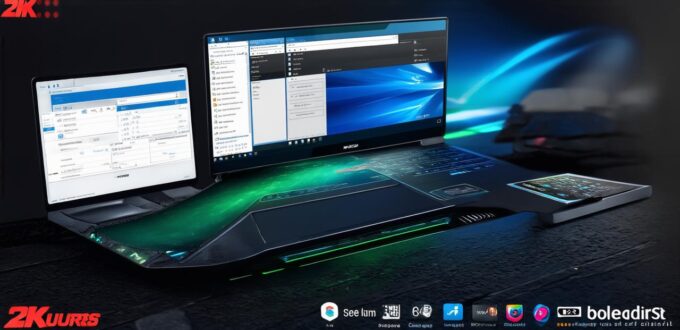As software developers, we are constantly working with various types of software to create applications that can run efficiently and effectively. One of the most important aspects of creating these applications is understanding the different categories of system software. In this article, we will explore the five categories of system software and their importance in creating robust and efficient applications.
1. Operating System Software
Operating system software is the foundation upon which all other software runs. It manages hardware resources, provides a user interface, and enables applications to run smoothly. Examples of operating systems include Microsoft Windows, macOS, and Linux. Operating systems are responsible for managing memory, allocating resources, and controlling input/output devices such as keyboards and printers.
Operating system software is essential for developers because it provides a framework for writing applications that can be easily distributed and run on different platforms. For example, if you develop an application for Windows, you can easily distribute it to other Windows users without the need for extensive testing or modifications. Similarly, if you develop an application for Linux, you can easily distribute it to other Linux users.
2. Application Software
Application software is designed to perform specific tasks and is intended for end-users. Examples of application software include Microsoft Office, Photoshop, and Chrome. Application software is created using programming languages such as Java, Python, and C++, and is typically used for tasks such as word processing, image editing, or web browsing.
Application software is important to developers because it provides a way to create programs that can be used by end-users. By creating applications that are easy to use and efficient, developers can increase user satisfaction and attract more users to their products.
3. Utility Software
Utility software is designed to perform specific tasks or functions within an application or operating system. Examples of utility software include antivirus software, disk cleanup tools, and system optimization tools. Utility software is created using programming languages such as C, Perl, and Ruby, and is typically used for maintenance and support purposes.
Utility software is important to developers because it provides a way to enhance the functionality of existing applications and operating systems. By creating utility software that can improve performance, increase security, or provide additional features, developers can create more valuable products for their users.
4. Device Driver Software
Device driver software is designed to enable communication between hardware devices and an operating system. Examples of device driver software include graphics card drivers, network card drivers, and sound card drivers. Device driver software is typically written in low-level programming languages such as C or assembly language.
Device driver software is essential for developers because it enables applications to interact with hardware devices. By creating device drivers that can properly communicate with different hardware devices, developers can ensure that their applications are compatible with a wide range of systems and components.
5. Firmware Software
Firmware software is a type of software that is stored permanently on a hardware device, such as a microcontroller or system-on-a-chip (SoC). Examples of firmware software include the BIOS (Basic Input/Output System) in computers and the firmware in smartphones. Firmware software is typically written in low-level programming languages such as assembly language.
Firmware software is important to developers because it provides a way to control the behavior of hardware devices at a low level. By creating firmware that can control hardware devices, developers can create more efficient and reliable systems.
FAQs
1. What is the difference between operating system software and application software?

Operating system software manages hardware resources and provides a user interface for applications to run, while application software performs specific tasks for end-users.
2. What are some examples of utility software?
Antivirus software, disk cleanup tools, and system optimization tools are some examples of utility software.
3. Why is device driver software important for developers?
Device driver software enables communication between hardware devices and an operating system, allowing applications to interact with different hardware devices.
4. What is the difference between firmware and software?
Firmware is software that is stored permanently on a hardware device, while software is run on a computer or other electronic device.
Summary
Understanding the five categories of system software is essential for software developers to create robust and efficient applications. By understanding how these different types of software work together, developers can create programs that are easy to use, reliable, and compatible with a wide range of systems and components. As technology continues to evolve, it will be important for developers to stay up-to-date with the latest trends and technologies in system software development.
